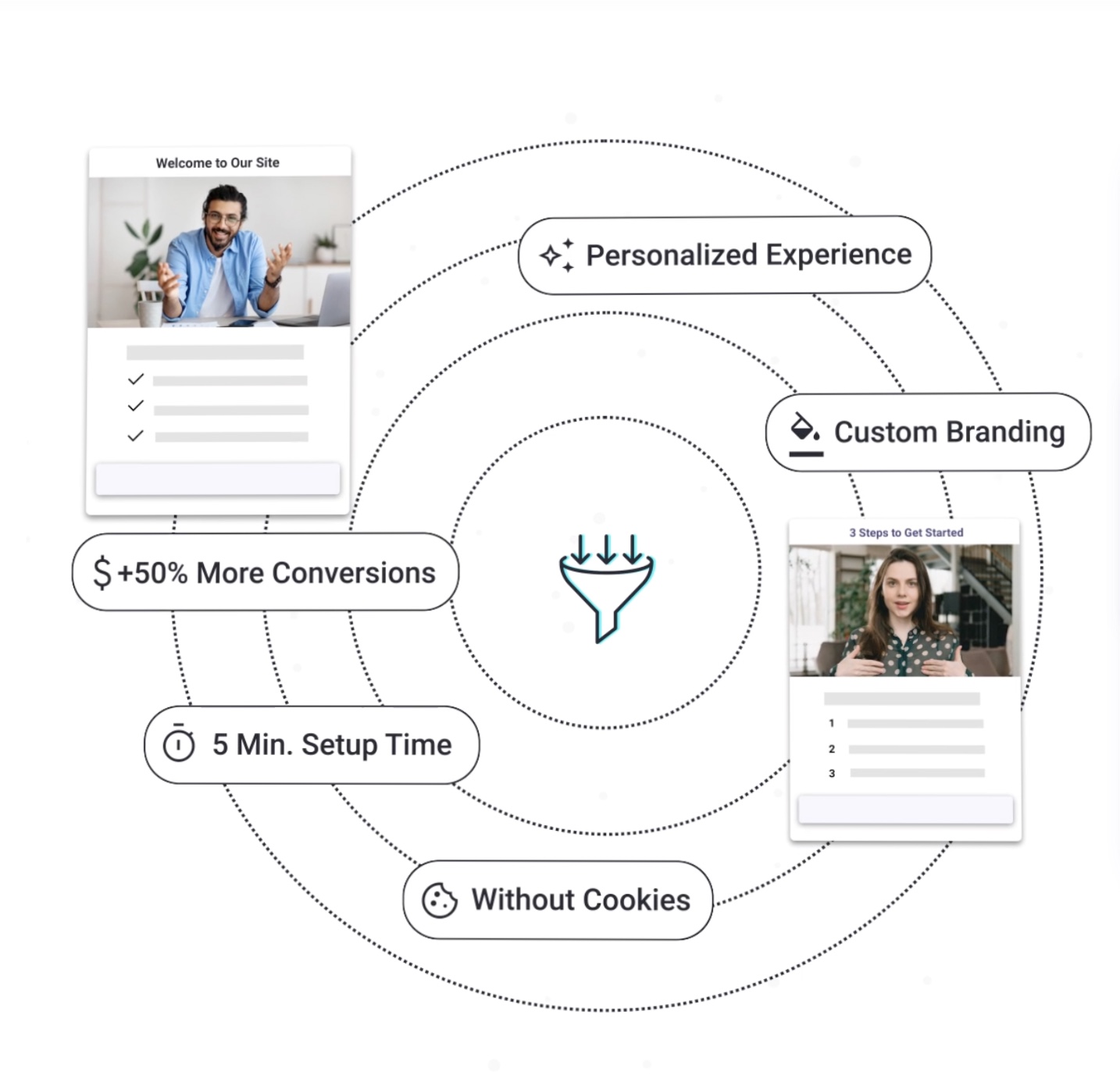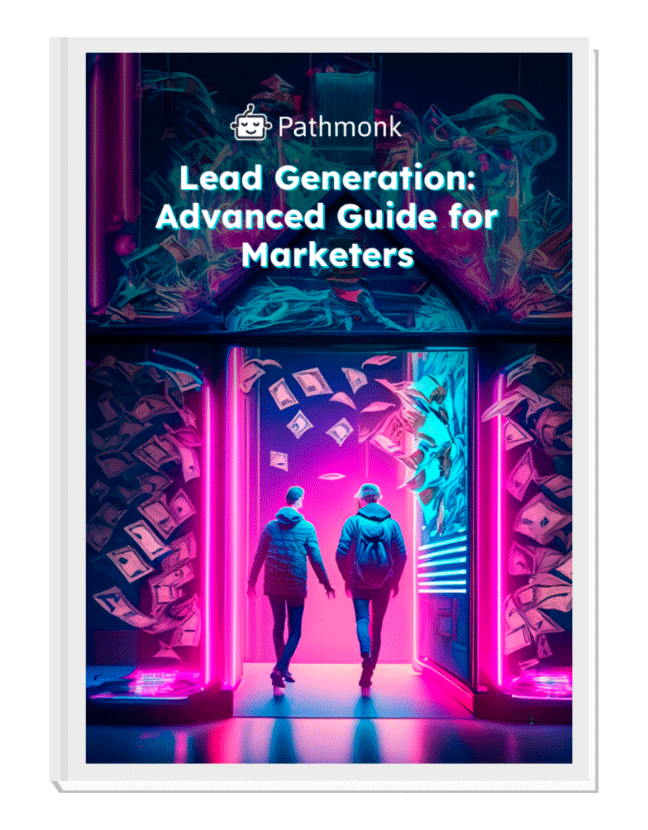
Navigating the customer value journey effectively is crucial for any business aiming to enhance customer experience and drive growth. However, managing this journey comes with its own set of challenges, each requiring strategic solutions to ensure successful outcomes.
Below, we explore five common challenges encountered in managing the buying journey and the best practices to solve these challenges.
Table of Contents
Lack of Clear Understanding of Customer Segments
Understanding customer segments is crucial for the effectiveness of marketing strategies and product development. Targeted marketing relies heavily on clear segmentation; without it, campaigns may become too broad or fail to align with customer expectations, ultimately resulting in lower engagement and conversion rates. By accurately identifying and understanding different segments, businesses can tailor their marketing efforts to address the unique preferences and needs of each group.
This focused approach not only enhances the consumer experience but also strengthens the overall market position of the business.
Reasons why this happens
- Data collection and quality: High-quality, comprehensive data is essential for effective segmentation. Issues arise when data is incomplete, inaccurate, or outdated.
- Integration of data sources: Often, customer information is scattered across various systems. Integrating this data into a single, coherent system can be technically challenging but is essential for accurate segmentation.
- Adapting to changes: Customer preferences and behaviors can change rapidly. Companies need to continuously monitor and update their segments to keep up with these changes.
Best practices for better customer segmentation
- Behavioral segmentation: This involves dividing the market based on consumer behavior, such as purchase history, product usage, and feedback. This type of segmentation helps predict future behaviors and personalize marketing messages.
- Demographic segmentation: It uses criteria like age, gender, income, education level, and family size to categorize consumers. Although basic, these details are critical for creating effective communication strategies.
- Psychographic segmentation: Focusing on lifestyles, values, attitudes, and personality traits, this method offers deeper insights into consumer motivations and preferences, which can be invaluable for crafting compelling marketing messages.
- Geographic segmentation: This separates customers based on location to tailor marketing strategies according to local preferences, weather, and cultural factors, which can significantly impact consumer buying behavior.
Inadequate Engagement in Early Stages
Brand perception, customer retention, and conversion rates are deeply influenced by the quality of initial interactions between a brand and its buyers. These early engagements shape the overall perception of the brand, setting the stage for all future interactions. When customers have a positive first experience, it not only fosters a favorable view of the brand but also sets a foundation for long-term loyalty and retention.
Furthermore, strong early engagement significantly increases the likelihood of advancing consumers through the buying process, enhancing conversion rates. This initial phase is critical as it can determine the ongoing relationship between the customer and the brand, highlighting the importance of getting these interactions right from the start.
Reasons why this happens
- Limited awareness: Buyers can’t engage with brands they’re not aware of, making visibility crucial.
- Misaligned content strategy: Content that fails to resonate with the target audience can lead to disinterest and disengagement.
- Suboptimal first impressions: Negative first experiences with a brand, whether through poor website design, customer service, or unappealing marketing materials, can discourage further interaction.
- Incorrect channel use: If a brand is not present on the channels their target audience prefers or uses them ineffectively, engagement can suffer.
Best practices for enhancing early engagement
- Targeted visibility efforts: Use SEO, PPC advertising, and social media to increase brand visibility where potential customers are most likely to be found. Tailor the messaging to meet the specific needs and interests of the target audience to ensure relevance.
- Improving first impressions: Enhance the user interface and user experience on all platforms, particularly websites and mobile apps. Train service teams to provide exceptional service from the first contact.
- Effective channel management: Identify and utilize the channels most frequented by the target audience, including newer platforms where the audience may be migrating. Integrate messaging across channels for a consistent brand experience that leverages the strengths of each platform.
- Personalization tactics: Implement marketing automation tools like Pathmonk Accelerate that enable personalization at scale, tailoring messages and offers based on individual behaviors and preferences. Based on the behavioral insights, our tool can dynamically adjust the content that visitors see. For instance, if a visitor spends a lot of time on product pages but has yet to make a purchase, this tool can trigger personalized offers or discounts specifically tailored to the products they viewed, enhancing the likelihood of conversion.
More Sales From Your Website With AI
Personalized interactions based on your users' behaviour to get +50% more conversions.

- Community engagement: Build and nurture online communities around the brand through social media, forums, or dedicated apps. Engage actively with these communities, encouraging user-generated content and peer-to-peer interactions.
Poor Integration of Marketing Channels
Firstly, ensuring a consistent brand message across all platforms reinforces the brand’s identity and values, making the brand more recognizable and trusted by consumers. Secondly, when all marketing channels are integrated, customers enjoy a seamless experience regardless of the touchpoint, whether they are interacting online, in person, or through traditional media. This consistency significantly increases buyer satisfaction and loyalty, as they feel more connected and valued by the brand.
Lastly, integrated marketing channels allow for the optimized use of resources. By coordinating efforts across various platforms, companies can achieve more effective outreach and engagement, leading to a higher return on investment and more efficient use of their marketing budgets.
Reasons why this happens
- Siloed operations: Departments or teams working in isolation without effective communication or shared goals can lead to inconsistent messaging and customer experiences.
- Data discrepancies: Inconsistent or incomplete data across channels can lead to misinformed strategies and poor decision-making.
- Strategy misalignment: Different teams may have varying objectives and strategies that do not align, complicating a unified approach.
Best practices for effective channel integration
- Cross-departmental collaboration: Encourage regular communication and joint planning sessions between different marketing teams to align goals and strategies. Establish interdepartmental teams to work on integrated campaigns, ensuring all stakeholders have input and agree on the approaches.
- Investment in technology: Implement an integrated marketing platform that allows for a unified view of client interactions across all channels. Use CRM systems that integrate data from sales, customer service, and marketing to provide a comprehensive view of the customer journey.
- Unified data management: Standardize data collection and management practices across all channels to ensure consistency and accuracy. Implement data integration tools that can merge and synchronize information from various sources, providing a single source of truth for decision-making.
Neglecting Customer Feedback
The importance of feedback cannot be overstated, as it serves as a vital tool for driving improvement and enhancing buyer satisfaction. Collecting and analyzing feedback provides businesses with direct insights into customer preferences and pain points, informing decisions about product development and service enhancements. This process ensures that companies are responsive to their customer’s needs and are continually improving their offerings.
Acting on buyers’ feedback demonstrates to them that their opinions are valued. This, not only improves customer satisfaction but also strengthens their loyalty to the brand, creating a positive cycle of engagement and improvement.
Reasons why this happens
- Inadequate collection methods: Many businesses lack efficient systems to gather feedback across various touchpoints.
- Poor analysis: Collecting feedback is only useful if the data is properly analyzed. Without effective analysis, valuable insights can be missed.
- Lack of action: Even when feedback is collected and analyzed, failing to act on the insights can lead to repeated issues and dissatisfaction.
- Limited reach: Feedback mechanisms often do not capture the full spectrum of the customer base, leading to a skewed understanding of consumers’ needs.
Best practices for effectively utilizing customer feedback
- Comprehensive collection systems: Implement a variety of feedback tools such as surveys, comment boxes, social media monitoring, and direct interviews to capture a wide range of responses. Ensure that feedback mechanisms are easy to access and use, encouraging others to share their experiences.
- Advanced analytical tools: Utilize data analytics software to sift through large volumes of feedback for meaningful patterns and trends. Apply text analysis and sentiment analysis tools to qualitative feedback to gauge emotions and satisfaction levels.
- Regular review and adaptation: Regularly review the feedback collection and analysis processes to adapt to new customer behaviors and market conditions. Adjust feedback mechanisms as necessary to ensure they remain effective and relevant to current needs.
- Transparent communication: Communicate openly about the feedback received and how the business is acting on it. This transparency can build trust and reinforce the value of buyers’ input. Use feedback stories as case studies to demonstrate the impact of customer voices on business decisions.
Ineffective Conversion Tactics
Ineffective conversion tactics refer to the strategies and methods that fail to successfully turn potential customers or leads into actual buyers or subscribers. This problem can significantly impact a business’s ability to capitalize on its marketing efforts and maximize return on investment.
By optimizing conversion strategies, companies can maximize their return on investment, ensuring that marketing efforts are not only effective but also profitable. This involves creating smooth and persuasive conversion processes, which in turn enhances the overall customer experience.
Reasons why this happens
- Unclear value proposition: If consumers do not understand the value or uniqueness of the offering, they are less likely to convert.
- Complex conversion processes: Overly complicated or unclear paths to purchase can deter potential buyers.
- Poorly targeted offers: Offers that do not align with the interests or needs of the target audience will have low conversion rates.
Best practices for conversion tactics
- Clarifying value propositions: Clearly communicate the benefits and unique features of your product or service. Ensure that these points are prominently featured in all marketing and conversion materials. Use A/B testing to find the most compelling way to present your value proposition to different segments.
- Simplifying the conversion process: Streamline the path to purchase by reducing the number of steps required to complete a transaction. Optimize web pages for speed and user experience, ensuring that forms are simple and navigation is intuitive.
- Targeting offers effectively: Use customer data and analytics to understand the needs and behaviors of different segments. Tailor your offers accordingly to increase relevance and appeal. Conduct market research to continuously adapt and refine offers based on customer feedback and changing market conditions.
Ebook: Advanced lead generation for marketers
Discover new strategies to unlocking a flood of high-quality leads from your website.

Wrap-Up
This journey is filled with challenges such as understanding the evolving needs of diverse customer segments, maintaining engagement from the first interaction, seamlessly connecting various marketing channels, actively incorporating customer feedback into business strategies, and refining conversion processes to maximize return on investment.
Addressing these challenges requires a blend of strategic insight, responsive marketing, and continuous adaptation to shifting consumer behaviors and market trends.





